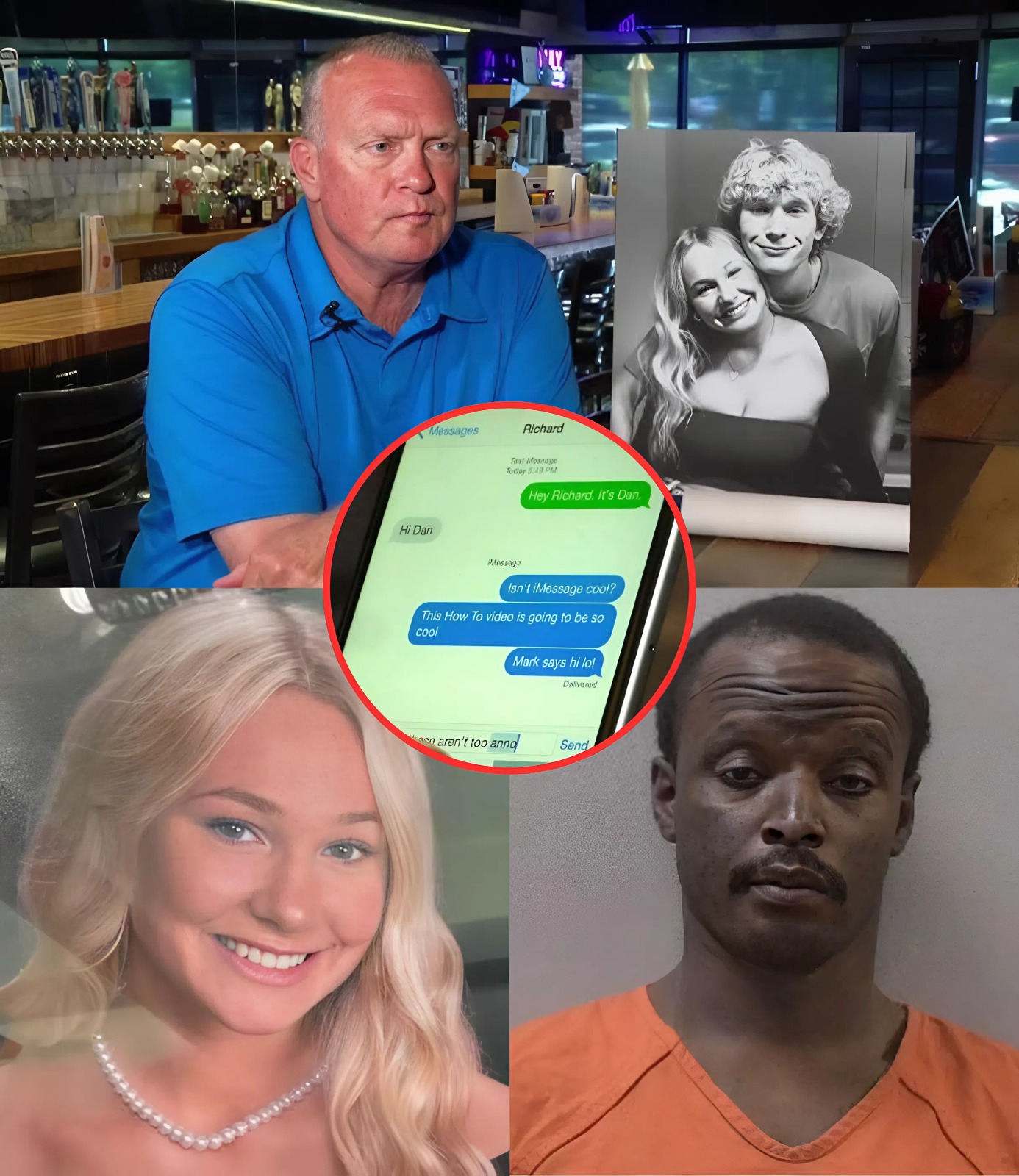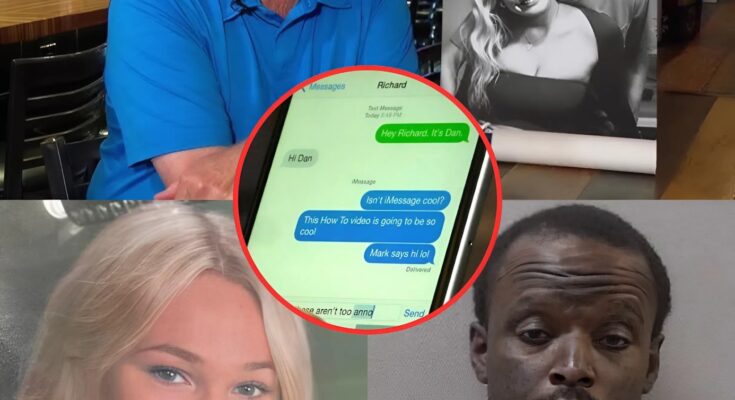By the time the sun rose over Maple Ridge, Oregon, on April 14th, a quiet dread had settled over the town. What began as a mother’s sleepless night soon spiraled into one of the most haunting digital mysteries of the decade — a case that blurs the boundary between the physical and the technological, between murder and manipulation.
At the center of it all was 23-year-old Logan Federico — bright, free-spirited, and deeply loved — whose final message to her mother was never received, and whose last known digital footprint simply… vanished.
The Last Night
It was supposed to be an ordinary Friday. Logan had spent the evening at a friend’s birthday gathering — a small get-together filled with laughter, drinks, and soft indie music humming in the background. Friends later described her as “calm, grounded, and glowing.”

Around 10:47 p.m., she hugged a friend goodbye, promised to text when she got home, and drove off in her silver Honda Civic. Security footage later confirmed she turned onto Route 19 — a dark, winding road surrounded by dense forest and uneven cell service.
At 11:12 p.m., she reportedly sent a text to her mother, Allison Federico:
“Don’t wait up, I’m safe.”
It should have been a message of reassurance. But when Allison woke around 1:30 a.m. and checked her phone, there was nothing. No new messages. No missed calls.
By dawn, Allison knew something was wrong.
The Vanishing Message
When Logan didn’t return home by morning, her mother contacted local police. Within hours, a search began — drones, volunteers, tracking dogs combing the woods. On the second day, Logan’s car was found three miles from Route 19, parked awkwardly off the shoulder, engine off, driver’s door ajar.
Her purse and keys were still inside. But Logan was gone.
Two days later, her phone was found submerged in a shallow creek nearly a mile from the car. Investigators managed to extract fragments of data — but the one message that should have been there wasn’t.
Digital forensics revealed that the text was composed and “sent” — but it never left the network. There was no delivery log, no bounce-back error, no timestamp. In the cellular record, it simply didn’t exist.

Lead detective Mark Tillman described it bluntly:
“It’s as if the message was swallowed by the system itself. That shouldn’t be possible.”
Telecom analysts were equally baffled. Even in a dead zone, messages are typically stored on servers and delivered once service returns. Complete disappearance — without a trace in the sender’s or carrier’s system — is almost unheard of.
Dr. Hana Morales, a cyber-forensics expert at the University of Washington, called it “a digital impossibility.”
“Either there was massive data corruption,” she said, “or someone — or something — intentionally deleted the message at a network level. That requires access far beyond an ordinary user.”
A Disturbing Possibility
By the end of the first week, search teams discovered Logan’s body in a wooded ravine less than half a mile from where her phone was found. There were no signs of sexual assault, no gunshot or stab wounds, no clear cause of death.
Medical examiners listed it as “undetermined.”
But the phone data — or lack thereof — became the investigation’s most chilling clue.
According to internal reports later leaked to a local journalist, the phone had been powered on three hours after Logan’s estimated time of death. In that brief window, it connected to an unknown Wi-Fi network labeled “Home_208” — a signal that did not match any address near the discovery site.
Then, it went dark forever.
Detectives believe the phone may have been accessed — possibly to erase data. But by whom, and for what reason, remains a mystery.
The Digital Ghost
In a press conference three weeks later, Detective Tillman admitted the department had reached “an unsettling impasse.”
“We’re looking at a case where the digital evidence doesn’t behave like digital evidence should,” he said. “It’s as if part of the night — part of her communication — was erased.”
For Logan’s mother, that erasure has become a second kind of death.

“I just keep thinking about that message,” Allison said in an interview with The Oregon Tribune. “I know she sent it. I know she wanted me to feel safe. But it never came through. I never got to reply.”
The phrase — “Don’t wait up, I’m safe” — has since echoed across the internet, shared by thousands under the hashtag #LogansMessage, symbolizing both her final words and the mystery of their disappearance.
Online forums have dissected every detail: the timing of the text, the network anomaly, even the metadata from the phone’s final moments. Some believe Logan stumbled upon something that night — an encounter gone wrong, a witness to something she shouldn’t have seen.
Others, more paranoid but not entirely dismissed, whisper of network interference, silent data wipes, or hidden connections between telecom infrastructure and criminal operations.
But amid the noise, one undeniable fact remains: Logan tried to reach her mother — and someone, or something, made sure that message never arrived.
Technology and the Modern Crime Scene
The Federico case has since sparked a national conversation about digital evidence integrity.
In an era when our entire lives are stored in phones, investigators increasingly rely on cloud data, text histories, and GPS records to reconstruct final hours. But what happens when the technology fails — or is manipulated?
Experts warn that as encryption and privatized networks grow more complex, so do opportunities for interference. “We’ve entered an age where tampering with digital truth is easier than tampering with physical evidence,” said Dr. Morales. “It doesn’t take a hacker from a movie — just the right access and the right knowledge.”
Civil rights advocates, meanwhile, are calling for stronger transparency laws requiring telecom companies to retain real-time metadata in missing-person cases. Currently, most carriers only store message logs for 48 hours unless formally subpoenaed.
In Logan’s case, by the time investigators issued the subpoena, the data window had already closed.
That 48-hour delay — a bureaucratic oversight — may have destroyed the only trace of her final communication.
A Town Haunted
Maple Ridge isn’t the kind of town that easily forgets. Today, the stretch of Route 19 where Logan disappeared is marked by flowers, candles, and handwritten notes. On one sign, someone scrawled in black ink:
“Don’t wait up, I’m safe.”
Every evening at dusk, locals light candles at the roadside — not just for Logan, but for the unanswered questions she left behind.
A mural downtown depicts her holding a phone that glows faintly — an image both peaceful and tragic.
Her best friend, Samantha Hale, says the mystery has changed the way people think about safety. “We used to tell each other, ‘Text me when you’re home.’ Now we don’t even trust that texts mean anything anymore.”
The Unsent Message
Six months later, the investigation remains officially open but stagnant. Theories abound — abduction, accident, digital tampering, even government interference. None have been proven.
Detectives have quietly confirmed one final detail: in the phone’s residual cache, a trace file contained a four-second audio clip recorded automatically as the message was typed.
It captured the sound of rain — and then, faintly, what might have been a voice in the background saying, “You shouldn’t be here.”
But the clip cuts off abruptly, replaced by static.
Experts couldn’t recover more.
For Allison Federico, that small fragment — rain, static, and the ghost of a daughter’s voice — is both a comfort and a curse.
“I listen to it every night,” she said softly. “It’s all I have left. I just wish the world had heard her when she spoke.”
She pauses, then whispers what she imagines her daughter wanted her to know:
“I’m safe now.”
A Reflection Beyond the Case
The disappearance of Logan’s final message raises a question bigger than any single crime: How much can we truly trust our digital reality?
Every text, every call, every ping we take for granted is part of a fragile, invisible web — one that can be disrupted, manipulated, or erased. And in that fragility lies danger.
Logan Federico’s story is not only a tragedy of life lost, but of truth lost — a chilling reminder that in an age of constant connection, even the simplest message can vanish into silence.
And sometimes, silence is the loudest clue of all.

